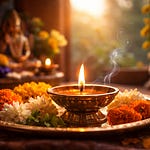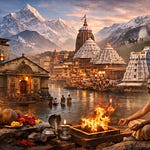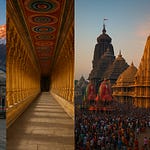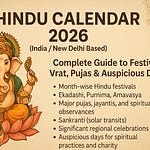The date of 17 August (Sunday) brings together three important religious occasions – Rohini Vrat, Goga Navami, and Simha Sankranti. These festivals are significant in Jain and Hindu traditions, carrying spiritual, cultural, and astrological meaning. Below is a detailed guide to each of these observances.
Rohini Vrat
Rohini Vrat is an important fast observed primarily by Jain women, especially those from the Shvetambara sect. It is performed on the day when the Rohini Nakshatra is active. The vrat is dedicated to attaining peace, harmony, and spiritual upliftment of the family. According to Jain belief, it is said to reduce the impact of hardships and bring prosperity and good health.
The vrat is also linked to the larger principle of Jainism: self-control and spiritual purification. By observing fasting and prayer, devotees strengthen discipline and reduce negative karmas.
Rituals and Puja Vidhi
Morning Purification – Women wake up early, take a holy bath, and wear clean clothes.
Altar Preparation – A sanctified space is created in the house with images or idols of Lord Vasupujya or other Jain Tirthankaras.
Sankalp (Resolution) – The devotee takes a vow of fasting for the day, praying for the welfare of her family.
Fasting – Most women observe a full-day fast. Some may consume only boiled water or fruits depending on tradition.
Prayers and Recitation – Jain scriptures like Kalpasutra or specific vrat katha (story of the fast) are read.
Evening Rituals – In the evening, women perform aartis and conclude the vrat with prayers.
Do’s and Don’ts (Do’shas)
Do not consume grains, pulses, or processed food.
Maintain silence and avoid anger or conflict.
Spend time in prayers, meditation, and reading Jain scriptures.
Aarti / Bhajans
The aarti is performed with a diya (lamp), incense, and flowers, often accompanied by Jain hymns such as:
“Om Jai Jai Vardhaman Swami”
“Arihant Vandana”
Temples to Visit
Shri Mahavirji Temple (Rajasthan)
Girnar Jain Temples (Gujarat)
Shravanabelagola (Karnataka)
Goga Navami
Goga Navami is dedicated to Goga Ji (Gogaji), a folk deity worshipped in Rajasthan, Punjab, Haryana, Himachal Pradesh, and Uttar Pradesh. Goga Ji is revered as the protector against snake bites and is popularly called the “Snake God.” He is considered a warrior hero and a deity of rural faith, embodying courage, protection, and devotion.
The festival falls on the Navami tithi of the Bhadrapada Krishna Paksha. Villagers, farmers, and devotees honor Goga Ji through fairs, processions, and temple worship.
Rituals and Puja Vidhi
Morning Rituals – Devotees wake up early, clean their houses, and decorate the worship area with turmeric and cow dung.
Idol or Symbolic Representation – Goga Ji is represented with an image, idol, or even a symbolic snake figure.
Offerings – Churma, jaggery, milk, and flowers are offered to Goga Ji.
Songs and Folk Rituals – Devotees sing “Goga Chaukiya” songs in his praise.
Processions and Fairs – In Rajasthan and Punjab, large fairs are organized, and devotees often perform jagrans (night vigils) with bhajans.
Do’s and Don’ts
Devotees avoid killing or harming snakes during this time.
A sense of brotherhood and community sharing is encouraged.
Aarti
The popular aarti for Goga Ji is:
“Om Jai Goga Dev Hare”, sung in temples and fairs.
Temples to Visit
Gogamedi Temple (Hanumangarh, Rajasthan) – The most famous shrine of Gogaji.
Goga Mandirs in Punjab and Haryana, often central to village life.
Simha Sankranti
Simha Sankranti marks the Sun’s entry into Simha Rashi (Leo zodiac sign). In Hindu astrology, this transition is significant as it influences cosmic energies and human life. It is dedicated to Surya Dev (the Sun God) and is a time for renewal, purification, and prosperity.
It is one of the 12 Sankrantis celebrated across the year, each marking the Sun’s transition into a new zodiac sign. Simha Sankranti generally occurs in August and is considered especially auspicious for Surya worship.
Rituals and Puja Vidhi
Morning Bath – Devotees wake up before sunrise and take a dip in holy rivers such as the Ganga, Yamuna, or Godavari.
Surya Arghya – Offer water, red flowers, and turmeric to the rising Sun while chanting Surya Mantras.
Puja – Light a lamp, prepare an altar with an image of Surya Dev, and offer wheat, jaggery, and red cloth.
Charity and Donation – Giving food, clothes, or money to the poor is considered highly auspicious.
Fasting – Some devotees observe fast and consume only fruits or satvik food.
Do’s and Don’ts
Avoid consuming non-vegetarian food or alcohol.
Control anger and maintain purity in thoughts and actions.
Chanting Aditya Hridaya Stotra is recommended.
Aarti
Common aartis and mantras include:
“Om Ghrini Suryaya Namah” (Surya Gayatri mantra)
“Jai Jai Surya Bhagwan Aarti”
Temples to Visit
Konark Sun Temple (Odisha)
Surya Narayana Temple (Arasavalli, Andhra Pradesh)
Modhera Sun Temple (Gujarat)
Surya Pahar (Assam)
The convergence of Rohini Vrat, Goga Navami, and Simha Sankranti on 17 August (Sunday) makes the day spiritually powerful and culturally vibrant.
Rohini Vrat emphasizes self-discipline, purity, and family well-being.
Goga Navami highlights folk traditions, valor, and protection from natural dangers.
Simha Sankranti marks the eternal rhythm of the cosmos, reminding devotees to honor the Sun and practice generosity.
Together, these observances reflect India’s deep spiritual heritage, blending faith, devotion, astrology, and community celebration.











